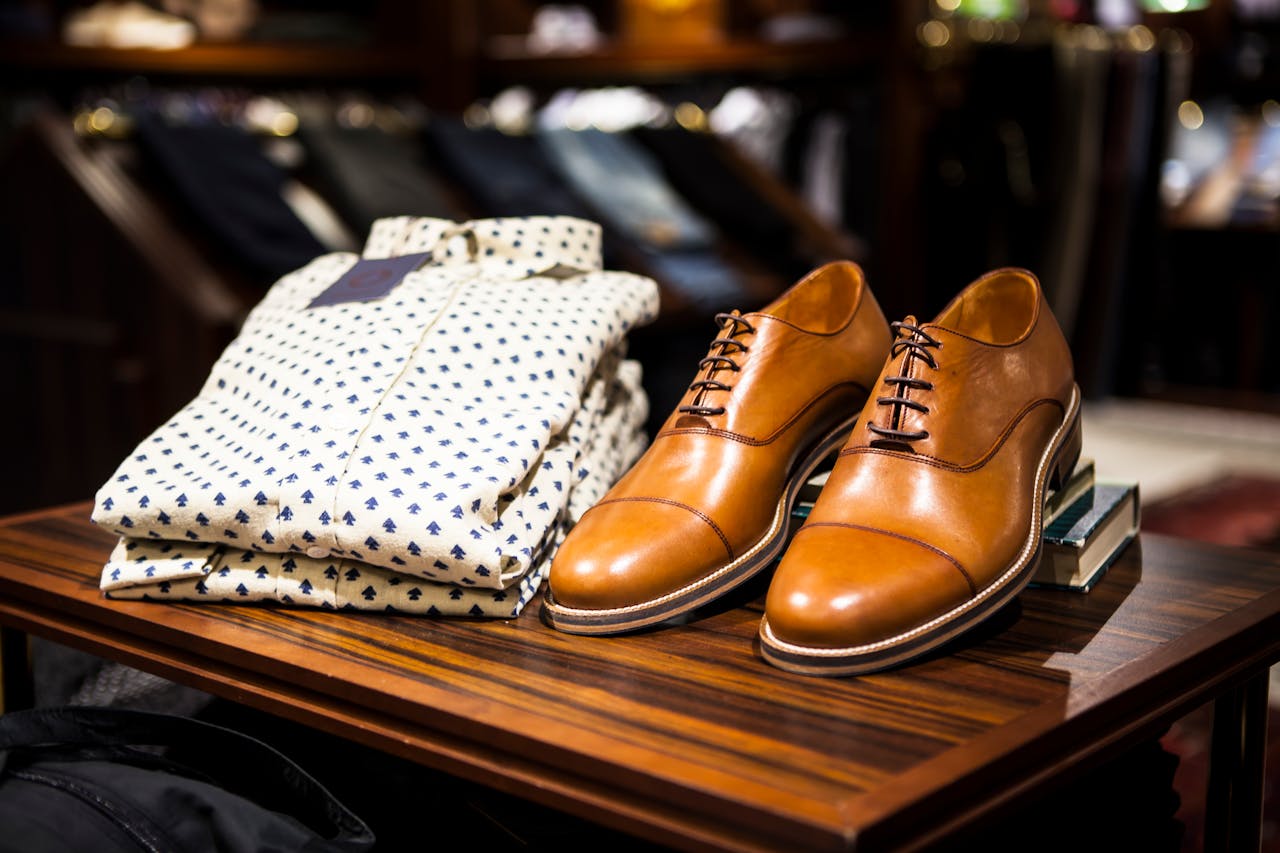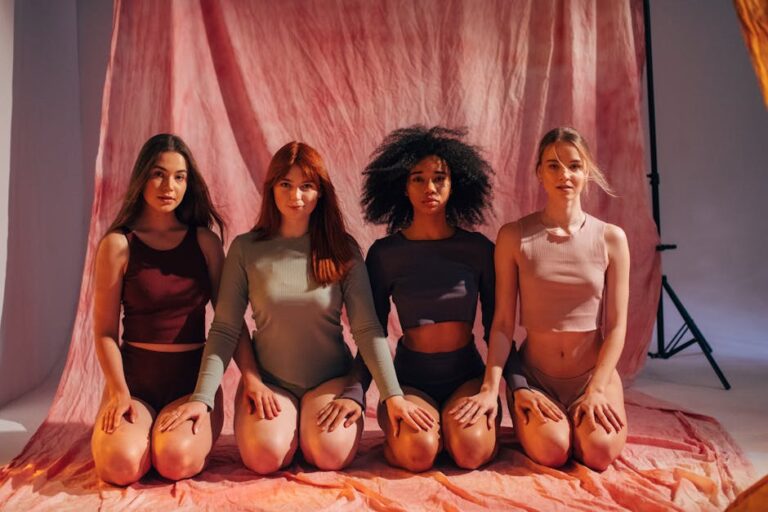Table of Contents
So, we’re almost in 2025, and it feels like everyone on the planet, especially anyone under, say, thirty-five, has at some point stumbled out of an Urban Outfitters store clutching a graphic tee they probably didn’t need, a pair of jeans that felt suspiciously thin, or a quirky home decor item that absolutely would not fit their tiny apartment. We’ve all been there. It’s got that vibe, right? Like, it’s cool, it’s current, it’s a little bit… something. But then you get home, pull that shirt out of the bag, and you just kinda squint at it. You hold it up to the light. And a little voice, maybe the one that got louder after watching too many documentaries, starts whispering: “Is this… fast fashion?”
And honestly, it’s a fair question. It’s one I’ve been asking myself for years, especially after a particularly memorable incident involving a sweater that unraveled itself after precisely one wash. One. Wash. That was probably 2021, if I’m being honest. It looked amazing on the hanger, felt cozy, and then just poof. Gone. Like it was made of wishes and cobwebs, not actual yarn. So, let’s peel back the curtain a little bit on Urban Outfitters, shall we? Because the answer isn’t a simple yes or no. It’s more like, “Well, depends on the day, the item, and whether Mercury is in retrograde.”
What’s the Big Deal with Fast Fashion Anyway?
Look, fast fashion isn’t just about clothes being cheap. It’s a whole ecosystem. It’s about rapid production cycles; churning out new collections faster than a celebrity can start a new feud. Think about it: a trend hits TikTok on Monday, and by Friday, a brand’s got a version of it in stores. It’s about quantity over quality, pushing consumers to buy more, more, more, because hey, it’s affordable, and next week there will be something new anyway.
This whole system thrives on low prices and quick turnarounds. And that usually means corners get cut somewhere along the line. Oftentimes, it’s the folks making the clothes who pay the price, literally. Or it’s the environment, drowning in textile waste and toxic dyes. We’re talking about a massive machine that spits out clothes at an unbelievable pace. It’s designed for disposability. You wear it a few times, it falls apart, you toss it, and you buy something else. It’s not exactly a recipe for a healthy planet or happy workers. My closet, for one, has seen its share of these casualties over the years. Pieces that looked promising, then just… fizzled out. And honestly, it gets expensive in the long run, replacing stuff constantly.
The Urban Outfitters Vibe: Trendy, Quick, and Kinda Shady?
Urban Outfitters has always been clever. They cornered the market on that whole “curated cool kid” aesthetic. They mix vintage-y items with modern trends, throwing in home goods and vinyl records for good measure. It’s a lifestyle, not just a clothing store. They get what young people want. They understand that specific, slightly ironic, slightly bohemian, slightly grunge look. They nail it. And they nail it fast.
Think about how quickly they pick up on micro-trends. One minute it’s parachute pants, the next it’s hyper-feminine bows. UO seems to have a sixth sense for what’s about to blow up, or they just make it blow up themselves. They don’t wait around. They’re on it. This rapid response time, this constant flow of new inventory, it’s one of the first big red flags when you start talking about fast fashion. If a store always has something new, something right now, it often points to a supply chain that’s moving at breakneck speed.
Drilling Down: Production and Supply Chains
So, where do these clothes actually come from? That’s the million-dollar question, isn’t it? Urban Outfitters, like many big retailers, doesn’t actually own its factories. They outsource production to a huge network of suppliers, mostly overseas. This is where things get murky. When you’ve got a complex global supply chain, it’s incredibly difficult to keep tabs on every single step.
They have a “Vendor Code of Conduct” – sure, everyone does. It covers things like fair wages, safe working conditions, no child labor. Sounds good on paper. But enforcing it across thousands of factories in different countries is a monumental task. Realistically, some of these factories are likely pushing workers hard, paying them pennies, and not bothering with environmental protections. Why? Because UO wants their stuff cheap and fast. And when a company demands those things, some factory somewhere is going to cut corners to deliver. I remember reading once about a major brand (not UO specifically, but same ballpark) that claimed ethical practices, and then a reporter found workers literally living in the factory. It makes you wonder.
Quality Control: The Flimsy Factor
This is where my personal experience really kicks in. That unraveling sweater? Not an isolated incident. I’ve bought dresses from UO that felt like they were made from tissue paper, jeans where the seams twisted after a few washes, and tops that developed holes in mysterious places. It’s not just me. Talk to almost anyone who shops there regularly, and you’ll hear similar stories.
This isn’t unique to Urban Outfitters, of course. It’s a hallmark of the fast fashion model. When you prioritize speed and low cost, something has to give. And usually, that something is the quality of the materials and the craftsmanship. The clothes aren’t built to last. They’re built to be worn a few times, maybe posted on Instagram, and then discarded. It’s a fundamental part of the business plan: get you back in the store buying more. If their clothes lasted five years, they’d sell a lot less.
Environmental Footprint: The Unseen Costs
The environmental impact of fast fashion is just staggering, and UO is part of that. Think about the resources needed to produce millions of garments every year: tons of water for growing cotton, harsh chemicals for dyeing and finishing, and massive amounts of energy for manufacturing and shipping. Then there’s the waste. When clothes are cheaply made and quickly discarded, they end up in landfills. Mountains of textile waste.
And it’s not just the stuff we buy and throw away. Sometimes, entire collections don’t sell and get incinerated or sent straight to the dump. It’s a brutal cycle. UO might talk a good game about sustainability – a little recycled cotton here, a “vintage” collection there – but is it enough to offset the sheer volume of new, trendy stuff they pump out? I don’t think so. It feels a lot like greenwashing sometimes; a little bit of lip service to make us feel better while the main business model keeps churning. It’s like putting a band-aid on a gushing wound and calling it a full recovery.
The “Vintage” Conundrum: A Glimmer of Hope or Just a marketing Ploy?
Okay, let’s talk about their “Urban Renewal” collection. They’ve got this whole thing where they rework old clothes, or sell genuine vintage pieces. This sounds great, right? Reuse, reduce, recycle! And it is better than making new stuff from scratch. It taps into that thrifting aesthetic that’s so popular.
But let’s be real. How much of their actual business is driven by these reclaimed pieces versus the mountain of brand-new, mass-produced items? It’s probably a tiny fraction. It’s a nice little accessory to their main business, a way to add a bit of perceived ethical cred without fundamentally changing their core model. It’s a marketing strategy, a good one, but still a strategy. It’s like eating one carrot stick after a whole pizza – nice gesture, but not exactly a balanced meal.
So, Is Urban Outfitters Fast Fashion? The Verdict.
After all this, my answer is: yes, mostly. Urban Outfitters, despite its attempts to dabble in “vintage” and occasionally use some recycled materials, fundamentally operates on a fast fashion model. They prioritize trendy, affordable items, rapid turnover of stock, and global sourcing that often comes with ethical and environmental blind spots. The quality of most of their products just screams “disposable.”
They’re not as aggressively cheap as some of the ultra-fast players, sure. They’re more of a mid-tier fast fashion brand. They sell a lifestyle, an idea, which makes people maybe overlook the flimsy seams or the questionable origins. They sit in that weird middle ground where they’re not quite H&M prices, but they’re also not exactly building investment pieces. It’s a precarious spot, where they can claim a certain level of artistic integrity while still benefiting from the speed and cost advantages of the fast fashion machine.
They’re good at hiding it behind a bohemian, “cool kid” facade. You walk in, you hear the indie music, you see the art books, and you forget you’re essentially in a giant retail chain moving clothes faster than you can say “micro-trend.” It’s clever, really. But when you strip away the aesthetics and look at the actual business practices, the speed of production, the focus on trends, and the often-questionable quality, it’s pretty clear. Urban Outfitters is playing in the fast fashion sandbox.
What’s a Conscious Consumer to Do in 2025?
It’s tough out there. You want to look good, you want to be current, but you also don’t want to contribute to environmental destruction or worker exploitation. The good news is, we’ve got more options now than ever.
Instead of hitting up UO for every new trend, maybe consider these:
Thrifting and Secondhand: Go to a local thrift store. Hit up online resale apps. So much good stuff out there just waiting for a second life. It’s sustainable, unique, and usually way cheaper. My best finds have always been from forgotten corners of dusty shops.
Rental Services: For those one-off events or super trendy items you only want for a bit, clothing rental services are a lifesaver. You wear it, you return it, someone else wears it. Genius, really.
Sustainable Brands: There are more and more smaller brands popping up that are genuinely committed to ethical production and sustainable materials. They might be a bit pricier, but you’re paying for quality and peace of mind. Plus, they usually last.
Repair and Re-wear: Learn to sew a button, patch a hole. Extend the life of your clothes. It’s amazing what a little TLC can do for a favorite piece. I just fixed a tear in a shirt last week that I thought was destined for the bin. Felt pretty good about that.
The key is to shift your mindset from quantity to quality, from constant newness to thoughtful consumption. It’s not about never buying anything new again. It’s about being more intentional about what you buy, and who you’re buying it from. It’s about asking those uncomfortable questions and pushing brands to do better. Because at the end of the day, our choices, even small ones, add up.
The Future of Fashion and Urban Outfitters’ Role
In 2025, the pressure on brands to clean up their act is only going to get stronger. Consumers, especially younger ones, are more aware and more vocal. They’re looking for transparency, for real commitment to ethical practices, not just pretty words on a website. Urban Outfitters, and parent company URBN, will have to decide if they want to truly change their model or continue riding the fast fashion wave until it eventually crashes.
They have the resources, the brand recognition, and the customer base to make a real difference if they wanted to. Imagine if they genuinely invested in closed-loop systems, if they ensured truly fair wages across their entire supply chain, if they built clothes to last. That would be something. But for now, they are very much a part of the problem. They benefit from the current system. And until that changes, they’re going to remain firmly in the “fast fashion” category, even if they occasionally put a cool vintage Levi’s jacket on the rack next to a polyester top that will fall apart after two washes. It’s a mixed bag, but the main ingredient is still fast fashion.
It’s a tricky dance for consumers, trying to navigate this landscape. On one hand, UO offers a certain aesthetic that’s hard to find elsewhere, and it’s often more accessible price-wise than true slow fashion brands. On the other hand, the cost to the planet and the people making the clothes is immense. It really forces you to weigh your options. Do you want that trendy top for one season, or do you want a clearer conscience? It’s not always an easy choice, is it? But knowing the full picture, knowing what you’re really supporting, that’s the first step.
Why Does It Matter So Much?
It matters because our consumption habits have real consequences. Every dollar we spend is a vote for the kind of world we want. When we buy fast fashion, we’re voting for cheap labor, environmental destruction, and a throwaway culture. When we choose differently, whether it’s buying secondhand, investing in quality, or supporting truly ethical brands, we’re voting for something better. It’s a long game, sure, and one purchase won’t change everything overnight. But enough purchases, enough shifts in consumer demand, and suddenly those big companies have to sit up and pay attention. My optimism tells me they will eventually, because they’ll have no choice.
Key Takeaways
Speed of Production: Urban Outfitters rapidly produces new collections to keep up with trends, a defining characteristic of fast fashion.
Quality Concerns: Many items from Urban Outfitters are not made to last, suggesting a focus on disposability rather than durability.
Supply Chain Opacity: Like many large retailers, UO’s complex global supply chain makes it difficult to fully guarantee ethical labor practices or environmental standards in their factories.
Environmental Impact: The sheer volume of new clothing produced by UO contributes significantly to resource depletion and textile waste, despite minor efforts in sustainability.
“Urban Renewal” as Marketing: While their vintage collection offers a glimmer of sustainability, it represents a small portion of their overall business model and acts as a marketing tool.
Consumer influence: Conscious consumer choices, such as buying secondhand or supporting genuinely sustainable brands, are crucial for driving change in the fashion industry.
Frequently Asked Questions
Is Urban Outfitters considered an ethical brand?
Overall, Urban Outfitters is generally not considered an ethical brand due to its fast fashion practices; this includes concerns about labor conditions in their supply chain and their environmental impact.
How does Urban Outfitters compare to other fast fashion brands?
Urban Outfitters operates within the fast fashion model; it’s positioned slightly above the ultra-cheap, disposable brands like Shein or Temu in terms of price and aesthetic, but still shares core fast fashion characteristics.
Does Urban Outfitters use sustainable materials?
Urban Outfitters does use some sustainable materials, like recycled cotton, in a small portion of its products, but this is a minor part of their overall collection, which largely relies on conventional, less sustainable materials.
What are some alternatives to shopping at Urban Outfitters?
You can consider shopping at thrift stores, using clothing rental services, exploring brands explicitly committed to ethical and sustainable practices, or focusing on repairing and re-wearing the clothes you already own.
Does buying vintage from Urban Outfitters make a difference?
Buying vintage or “Urban Renewal” items from Urban Outfitters is a more sustainable choice than buying new items, as it gives existing garments a second life; however, it’s a small part of UO’s business and doesn’t change their overall fast fashion model.












